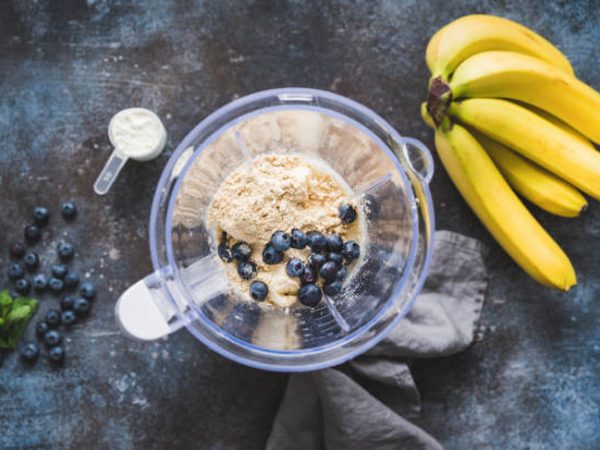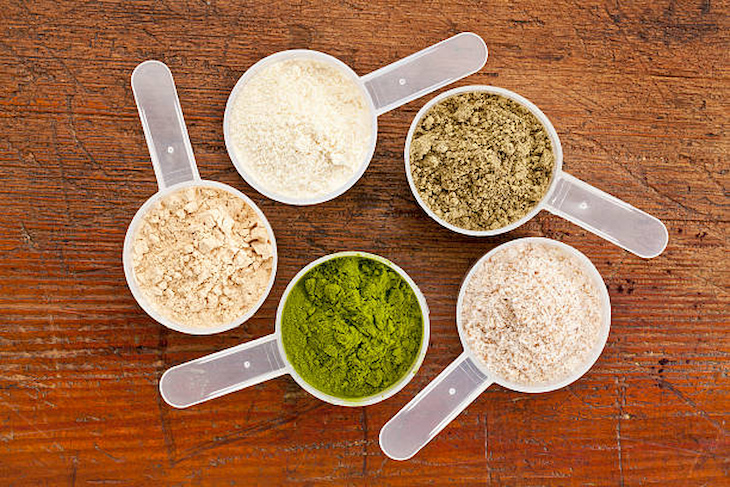07
Apr

The health and wellness world is buzzing about plant-based powders, and for good reason. These concentrated nutritional powerhouses offer an easy way to boost your daily intake of protein, vitamins and minerals. Whether you’re looking to supplement your diet, fuel your workouts or simply add more plant-based nutrition to your routine, plant-based protein powders and other plant-derived supplements can be game-changers.
Plant-based powders are concentrated forms of nutrients derived from whole food sources like peas, rice, greens and superfoods. Through careful processing, these ingredients are transformed into fine powders that dissolve easily in liquids while retaining their nutritional value. Unlike synthetic supplements, these powders offer nutrients in forms your body recognises and can readily use.
The market of flavourful plant-based protein powders offers something for every nutritional need:

Protein powders are the most popular category of plant-based supplements, with several excellent options available.
Derived from yellow peas, this complete protein contains all nine essential amino acids. It’s particularly rich in branched-chain amino acids (BCAAs) that support muscle recovery. Pea protein has a neutral flavour and mixes well in shakes.
Made from brown rice, this hypoallergenic option is easily digestible. While not a complete protein on its own, it pairs well with pea protein to create a balanced amino acid profile.
One of the few complete plant proteins, soy protein offers all essential amino acids. It has a creamy texture that works well in protein shakes and baked goods.
Packed with omega-3 fatty acids and fibre, hemp protein provides more than just muscle-building amino acids. Its nutty flavour adds depth to smoothies and snacks.
This underrated protein source is rich in magnesium, zinc and healthy fats. It has a distinctive earthy flavour that pairs well with chocolate or cinnamon.
Many plant-based protein powder options combine multiple protein sources to create optimal amino acid profiles. These blends offer the benefits of each component while balancing flavours and textures.
Beyond protein, plant-based powders can supercharge your nutrition with concentrated vitamins, minerals and antioxidants.
These vibrant blends typically contain:
These functional food powders offer targeted benefits:
With so many plant-based protein supplements available, consider these factors when selecting products:
Identify your primary goals. Whether it’s muscle building, increased energy, general wellness or filling nutritional gaps. This will guide you toward the most appropriate powder types.
Look for products with:
Read reviews and try sample sizes when possible. The best nutritional profile won’t help if you can’t stand the taste or texture. Many brands now offer flavoured options that make consumption enjoyable.

These versatile powders can enhance nearly any meal or snack. Blend protein or greens powders with nut milk or coconut water, frozen fruits, nut butter and ice. Boost the nutrition of pancakes and waffles, energy balls and bars or homemade breads. Stir powders into overnight oats, hot cereals, plant-based yoghurts and chia puddings. Some powders mix well into hot beverages for a nutritional boost.
The plant-based protein powders and other plant-derived supplements offer a convenient, effective way to enhance nutrition in our busy modern lives. Whether you’re an athlete looking to optimise recovery, someone transitioning to plant-based eating or simply a health-conscious individual, there’s a plant powder to meet your needs.
As you explore the world of plant-based protein powder for sale, remember that quality matters. Invest in reputable brands that prioritise clean ingredients and transparent sourcing. Start with small quantities to find what works best for your taste preferences and nutritional requirements. Just as important as choosing quality supplements is creating an at-home gym, where you can combine exercise with your enhanced nutrition to achieve optimal wellness.
Most importantly, view these powders as supplements and not replacements for a balanced diet rich in whole plant foods. When used thoughtfully as part of a comprehensive wellness plan, plant-based powders can be powerful tools for supporting your health journey.